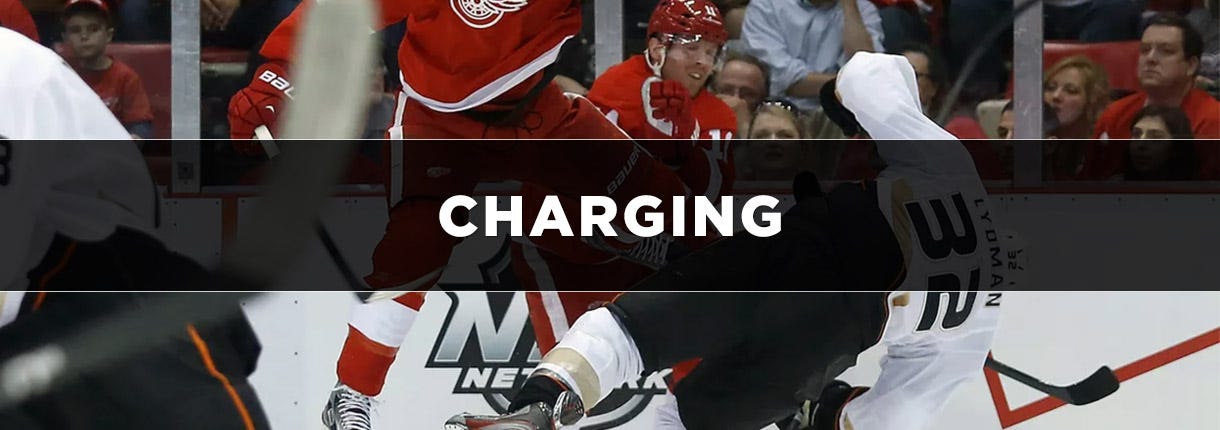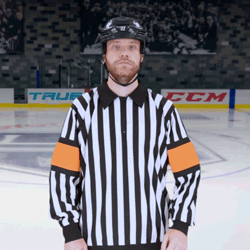Charging in Hockey: What is the NHL’s Charging Penalty?

Charging in hockey is when a player charges an opponent and makes contact with them, whether it be by skating, or jumping, into them. This can occur anywhere on the ice, and what differentiates it from a standard body check, is the distance traveled to make the hit.
The general rule of thumb is that if a player hits another from three or more skating strides away, it will likely be called a charging. However, it is at the referee’s discretion to determine what that “distance” is.
Help keep yourself fully protected by shopping our wide variety of hockey helmets, hockey shoulder pads, and hockey elbow pads!
- Charging Example
- Charging Referee Sign
- Penalties for Charging
- Official NHL Charging Rule Text (Rule 607)
- Charging vs. Boarding
- Actions That Cause Charging Penalties
Charging Example
The video above is a good example of what a Charging penalty looks like. It was called a Charging penalty for a few reasons. One, the Flyers (orange jersey) player took more than three skating strides before making contact with the Devils (white jersey) player. This is seen as targeting. And two, before initial contact, the Flyers player leaves his skates and launches himself into the upper portion of the Devils player.
Charging Referee Sign

Rotating clenched fists around each other, in a circular motion, in front of the chest.
Penalties for Charging
A charging infraction can have several different outcomes, depending on the severity. They are Minor Penalty (two minutes), Major Penalty (five minutes), Match Penalty (removal from game plus five minutes), Game Misconduct Penalty (removal from game plus ten minutes), and a fine/suspension.
Minor and Major penalties are usually called if the play fits the Charging qualities, but the referee determines that a player was not targeting his opponent. Match and Game Misconduct penalties are called when the referee determines that a player was intentionally targeting, and trying to injure his opponent.
Official NHL Charging Rule Text (Rule 607)
“Charging is the action where a player takes more than two strides or travels an excessive distance to accelerate through a body check for the purpose of punishing the opponent. This includes skating or leaving one’s feet (jumping) into the opponent to deliver a check, accelerating through a check for the purpose of punishing the opponent, or skating a great distance for the purpose of delivering a check with excessive force.”
Charging vs. Boarding
Boarding is a penalty called when a player body checks an opposing player into the boards of the ice. This penalty will be called when the guilty player hits another player from behind, or after he no longer has the puck.
Charging and Boarding penalties are very similar in terms of the characteristics. Both include making contact with a defenseless player with excessive force. However, where they differentiate is that Boarding consists of the receiving player hitting the boards, whereas a Charging infraction can happen anywhere on the ice.
Distance traveled is the biggest factor when determining a Charging penalty and is up to the referee’s discretion as to what differentiates a Charging from a standard body check. A Charging penalty will almost always be called if a player takes three or more skating strides and hits another player, as it is usually seen as “targeting.”
Actions That Cause Charging Penalties
There are a few actions that a player can commit that will lead to the referee calling a Charging penalty every time. They are:
- Targeting opposing player (three to five skating strides)
- Leaving skates before initial contact
- Head contact
- Deliberate intent to injure (referees discretion)











